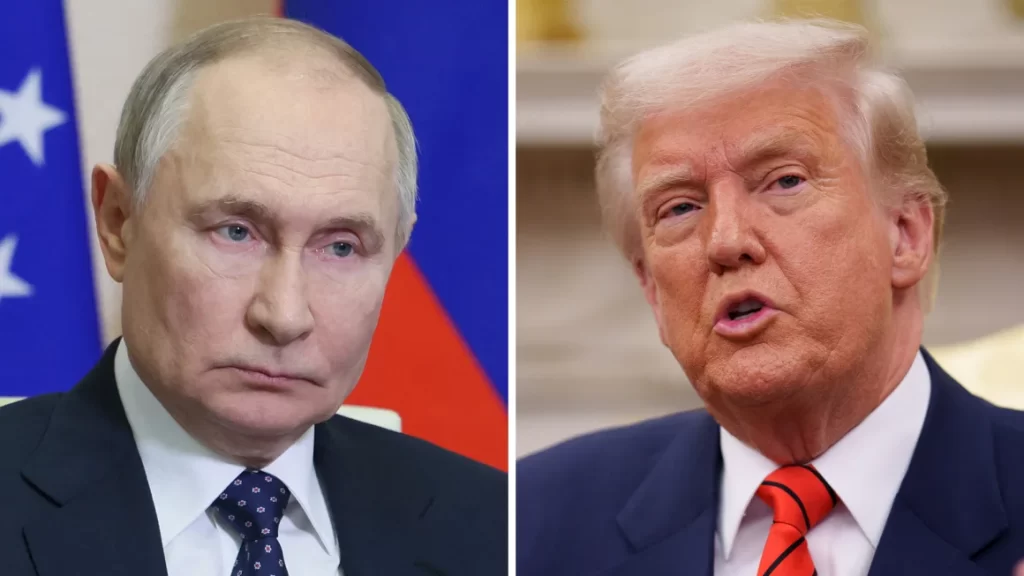
Tuesday’s high-stakes meeting between Russian President Vladimir Putin and President Donald Trump is anticipated as the White House maintains that it is nearing an agreement on a short-term truce to halt the conflict between Russia and Ukraine.
However, the discussion will serve as a crucial litmus test for whether Trump, who has essentially adopted Putin’s stance on the war since their call last month, can fulfill his campaign pledge to stop the conflict and whether his goodwill toward Russia has paid off.
Speaking to reporters on Air Force One on Sunday, Trump implied as much when he stated that US negotiators have talked about “dividing up certain assets.”
“We’ll be discussing land. As you know, a lot of the land has changed significantly since the conflict. It’s a large question, but we’ll be talking about land and power projects,” Trump stated.
According to the Kremlin, Putin has been preparing for the meeting with Trump by having his team prepare talking points about Russia’s stance.
Following a lengthy stretch of silence between the White House and the Kremlin, Trump and Putin spoke over the phone last month, signaling the start of negotiations to end the war. Since then, the US has temporarily halted military aid and information cooperation when the president welcomed Ukrainian President Volodymyr Zelensky for a meeting in the Oval Office that concluded with Trump and Vice President JD Vance yelling at him and requesting that the Ukrainians leave.
A US-led ceasefire proposal was announced after weeks of intense back-and-forth negotiations between top US officials, including national security adviser Mike Waltz, Secretary of State Marco Rubio, and Middle East envoy Steve Witkoff, and top Ukrainian and Russian officials. The US made it plain that Russia had the burden of agreeing when Zelensky announced last week that his nation had accepted the 30-day proposal, with Trump stating that “Russia holds all the cards.”
After the Russian leader listed all of his concerns, Witkoff countered that Putin believes “philosophically in a truce.”
The sources claimed that once Witkoff flew to Florida to inform Trump on the talks, the president was so inspired by his report that he ordered his staff to start getting ready for a phone conversation with Putin.
Rubio had a conversation with Russian Foreign Minister Sergey Lavrov over the weekend.
White House press secretary Karoline Leavitt told reporters Monday that the United States has “never been closer to a peace deal than we are in this moment” and that “we are on the 10-yard line of peace.”
The insider also stated that Trump and Putin are likely to discuss the possibility of an in-person meeting, which Trump stated last month he hoped would occur soon.
In order to move on to the much more complex problems that must be settled in a longer-term peace agreement, such as arranging security support for Ukraine and defining territorial lines, Trump and his team have maintained time and again that the violence must end.
Putin, however, has openly expressed doubt about the US plan. Last week, the Russian president stated that Ukraine must consent to certain concessions, including stopping the mobilization and training of its military and that other countries must quit providing Kyiv with weaponry during the ceasefire.
The US ceasefire proposal was rejected by Yuriy Ushakov, one of his senior negotiators, as “nothing more than a temporary respite for the Ukrainian military.”



